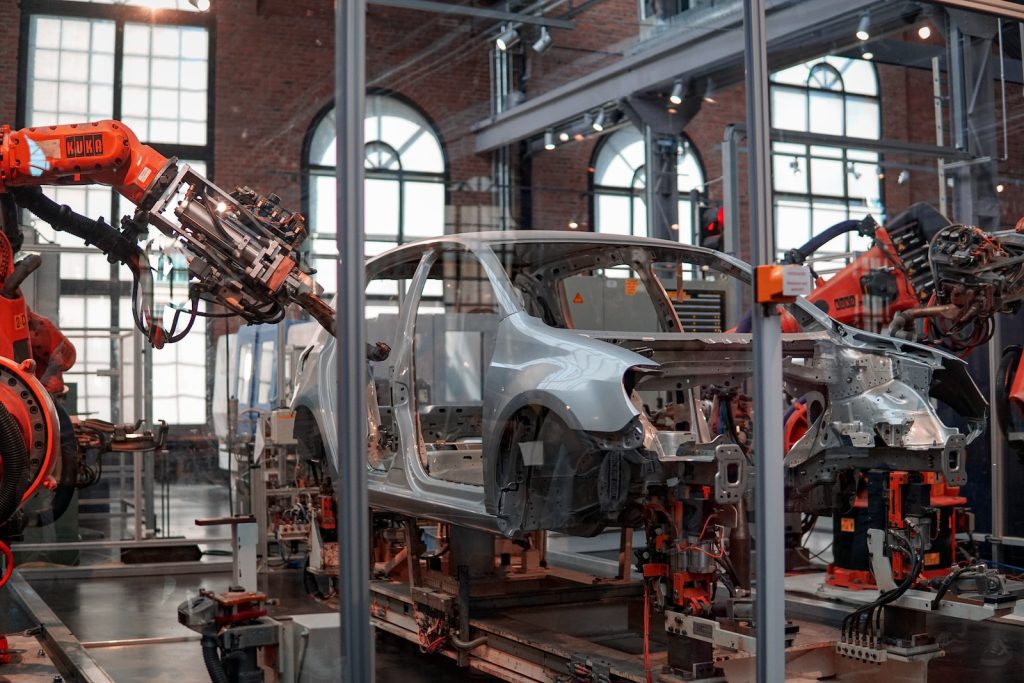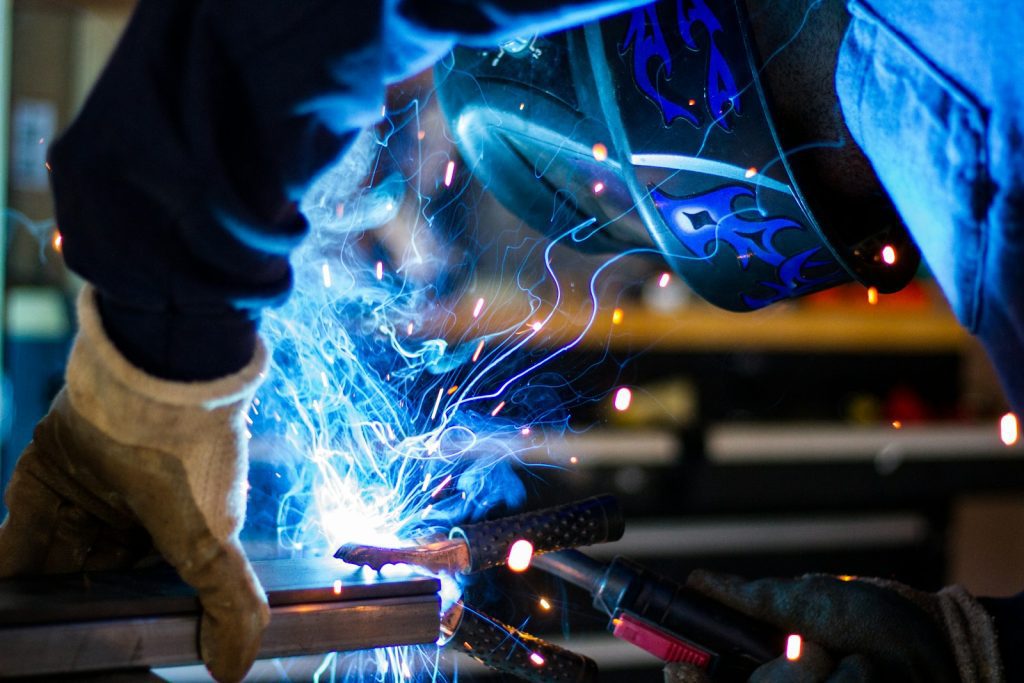The cascade of new construction technology inundating the construction industry paves the way for an epic evolution, revolutionizing how structures come to life New technologies are driving changes in construction. As 2024 unfurls, industry professionals watch the horizon as future construction equipment and technology trends promise to transform the landscape, enhancing efficiency and safety while mitigating environmental impacts. These technology trends in construction. latest trends are not mere blips on the radar, but rather driving forces propelling the construction industry evolution forward into 2024 and beyond.
Key Takeaways
- Tracking the pulse of construction technology trends in 2024 is crucial for industry professionals eager to stay competitive.
- New construction technologies are setting the stage for safer, smarter, and more sustainable building practices.
- The integration of futuristic construction equipment is anticipated to escalate productivity levels and redefine project delivery.
- Many construction firms are doing an exploration into these new technologies. technology trends reveals their potent impact on the industry, illuminating paths toward innovative construction solutions.
- Embracing the relentless tide of industry evolution equips construction companies with the tools needed to lead in a technologically driven future.
Embracing Sustainability and Green Building Construction Technology trends

In the face of climate change and rising environmental concerns, the construction industry has pivoted towards sustainability, integrating green building practices to lessen the environmental impact. Construction technologies now routinely incorporate energy-efficient materials and emphasize the use of renewable energy to create structures that are not only innovative in design but also exemplary in environmental stewardship.
Energy-Efficient Materials and Renewable Energy
Today’s forward-thinking construction professionals are adopting materials that pave the way for an eco-friendly future. The rise in the utilization of engineered wood and plastic composites, favored for their sustainability and durability, represents a significant shift in building material selection. Solar panels and energy-efficient HVAC systems are increasingly seen as essential components within new constructions, with Building Information Modeling (BIM) playing a key role in integrating these renewable systems seamlessly into building designs.
Innovative Green Construction for Climate Positivity
Innovative construction methods are actively reducing waste and fostering climate positivity within the industry. Carbon fiber-reinforced polymers, yet another breakthrough in material science, offer high strength-to-weight ratios, promoting energy conservation in structures. Such advancements are embraced as part of a broader commitment to reduce waste and curtail the environmental impact of the built environment, now heavily influenced by trends in construction.
| Material/Technology | Sustainability Feature | Benefits |
|---|---|---|
| Engineered Wood | Renewable resource with lower carbon footprint | Supports sustainable forest management practices |
| Plastic Composites | Utilizes recycled plastics | Reduces plastic waste and enhances durability |
| Solar Panels | Converts sunlight into electricity | Reduces dependence on fossil fuels and lowers greenhouse gas emissions |
| Energy-Efficient HVAC Systems are part of new technologies in construction. | Minimizes energy consumption | Improves air quality and reduces operational costs |
| Carbon Fibre-Reinforced Polymers | High strength with minimal material usage | Facilitates energy-efficient construction practices |
| Smart Building Management Tools | Optimizes building operations | Enhances energy efficiency and occupant comfort |
As the drumbeat of climate change reverberates across industries, it is the adherence to sustainable building practices that will mark the milestones in the construction sector’s journey towards ecological responsibility and innovation.
IoT Integration: Paving the Way for Smart Construction Sites

The dawn of the augmented reality era in construction. The Internet of Things (IoT) is ushering in a new era for the construction industry, featuring smart construction sites equipped with advanced connected devices and sensor technology for easier construction management. This paradigm shift promises significant enhancements in the way construction projects are managed and executed.
Real-Time Data Monitoring with Connected Devices: A trend in construction heavily impacting the industry.
Integrating IoT on construction sites enables the collection and analysis of real-time data for engineering and construction, fostering a culture of precision and proactive management. These connected devices gather information on various parameters, including climate conditions, machinery performance, and workforce distribution, transforming the construction industry.
- Equipment Monitoring: Sensors track usage and predict maintenance needs, reducing downtime.
- Material Tracking: IoT devices oversee inventory levels, ensuring a timely supply of resources.
- Environmental Sensing: Real-time monitoring of site conditions to ensure regulatory compliance.
Enhancing Jobsite Safety and Operational Efficiency
One of the paramount benefits of IoT is the marked improvement in job site safety for construction managers. By incorporating sensor technology, potential hazards can be identified and mitigated before they pose a risk to personnel. Furthermore, IoT elevates emerging technologies such as operational efficiency through optimized resource allocation and streamlined project management.
- Wearable Safety Devices: Enable monitoring of workers’ vital signs and stress levels.
- Automated Alerts: Immediate notifications of safety breaches to prevent accidents.
- Geo-fencing: Designates restricted zones and ensures only authorized access.
Finally, the integration of construction software with IoT infrastructure forms a powerful toolset for managing the complexities of modern construction projects, delivering insights and control never before possible with that technology.
| Aspect | Benefit | Application Example |
|---|---|---|
| Real-Time Data | Improved Decision Making | Adapting work schedules based on weather data |
| Connected Devices | Equipment Optimization | Preventive maintenance alerts for cranes and lifts |
| Sensor Technology | Enhanced Safety Measures | Heat stress sensors for workers in high-temperature areas |
| IoT on Jobsites | Operational Efficiency | GPS tracking for real-time location of vehicles/materials |
Automation Through Robotics in AI Construction Software

The construction landscape is undergoing a transformative upgrade in 2024 with the integration of automation and robotics. Striving for efficiency and enhanced workplace safety, the deployment of construction robots in performing labor-intensive tasks Augmented reality in construction is now a significant trend. This leap forward is not only a response to the labor shortage but also a way to expedite project acceleration and deliver with greater precision.
Artificial intelligence and machine learning New technology trends in construction are powering these robotic systems, resulting in smarter and more adaptable workflows for the construction worker. construction robots. Moreover, drones have taken to the skies, offering comprehensive site inspection and 3D surveying services which complement the ground-based robotics work. This tandem of aerial and terrestrial technologies is setting a new standard for the industry.
- Bricklaying robots greatly increase masonry efficiency
- Concrete-pouring automata ensure consistent and quality foundations
- Drones contribute to real-time progress tracking to keep projects on schedule
The symbiotic relationship between robotics and human crews accentuates a safer environment by handling repetitive and hazardous duties, allowing construction professionals to dedicate themselves to intricate and higher-level problem-solving tasks.
| Robotics Application | Benefits | Role of AI & Machine Learning |
|---|---|---|
| Bricklaying Robots | Improves speed of construction & reduces human fatigue | Adapts to various designs and patterns autonomously |
| Concrete Pouring Automata | Ensures consistent quality & strength | Calculates optimal mix and pour rates |
| Inspection Drones | Enhances precision in surveying and safety oversight | Processes complex data from sensors to map out construction sites |
The Rise of Modular and Prefabricated Construction Techniques

The construction landscape is visibly transforming with the advancing role of modular construction and prefabricated construction techniques. By revolutionizing the traditional construction process, these methods are ingeniously combating skilled labor shortages and amplifying construction efficiency. The future shines bright for building projects, as prefabrication ushers in optimized timelines and reduced costs against the backdrop of fluctuating market demands.
Adopting Building Information Modeling (BIM) and effective project management strategies has played a pivotal role in enhancing precision and allowing seamless integration of prefabricated components into construction sites. The unparalleled advantages it provides in terms of environmental control, reduced waste, and improved safety continue to drive its acceptance in the realm of construction innovation.
- Enhanced Quality Control: Factory settings for module production ensure adherence to stringent quality standards, largely free from on-site variables.
- Weather Independent Production: Indoor manufacturing mitigates weather-related delays, accelerating the construction schedule significantly.
- Labour Efficiency: Prefabricated elements require less manual labor for installation, a boon in the era of skilled worker scarcity.
Success stories, such as the rapid assembly of pre-made bathroom units for hospital construction, emphasize the potential to complete large-scale projects swiftly with minimum labor. This case highlights the tangible benefits of these contemporary construction techniques – a testament to the evolution that modular and prefabricated construction are inspiring in modern building practices.
The Revolutionary Impact of Future Construction Equipment on Industry Standards

In the realm of building and design, two revolutionary tools are at the forefront of the technological wave sweeping through the construction industry. The integration of innovative construction technology elevates the way professionals approach project planning, execution, and completion.
Drones and Advanced Machinery for Precision Work
The use of drones equipped with LiDAR technology has become an emerging trend that provides unparalleled accuracy in site inspections. LiDAR-equipped tools that help construction projects. drones generate detailed 3D maps and models that contribute to enhanced Design visualization, a tool used by many construction firms for better planning. and precision in planning. Below is an overview of how drones and advanced machinery are contributing to the industry.
- Drone-enabled terrain scanning for topography and site analysis.
- Efficient tracking of construction equipment movement.
- Monitoring of ongoing work for adherence to timelines and safety protocols.
- Collection of data for evaluating project progress and resource allocation.
3D Printing Contributes to Innovative Building Structures
The advancement of 3D printing technology is notably changing the paradigm for constructing building structures. From creating intricate architectural models to manufacturing robust building components, this emerging trend is set to revolutionize home construction and large-scale infrastructure projects.
| 3D Printing Application | Benefits | Industry Impact |
|---|---|---|
| Custom component fabrication | Reduces material waste | Enhances bespoke design possibilities |
| On-site construction printing | Accelerates building process | Provides solutions for housing shortages |
| Prototyping and model creation | Implementation of augmented reality improves client visualization and feedback. | Streamlines design approval processes |
As the construction industry gravitates toward these innovative solutions, traditional methods are being upended in favor of sophisticated, cost-effective, and eco-friendly alternatives. Embracing this shift is vital for stakeholders wishing to remain at the cutting edge of technology in the construction industry.
Conclusion
As the construction market forges ahead in 2024, those at its forefront are tapping into a spectrum of digital technologies to secure their competitive edge. Integrating advanced tools such as AI, AR, and VR into the construction process has proven to not only enhance collaboration among stakeholders but to foster a construction industry that is robust, innovative, and efficient. The persistent shift towards adoption of these technology trends signifies a deeper transformation within the AEC industry, heavily impacted by trends in construction., reflecting a commitment to progress and a rejection of the stagnation tied to traditional methodologies.
The Continuous Evolution of the Construction Industry
The swift progression of the construction industry, driven by emerging construction technology trends and the increasing presence of Building Information Modeling (BIM), equips construction professionals with a formidable arsenal to face ever-evolving challenges. By embracing such developments, industry players ensure their methodologies are in continuous refinement, supporting their ascent within an environment that is becoming increasingly reliant on productive advancements and digital solutions.
Remaining Competitive with Cutting-Edge Technology
To stay relevant and thrive, firms are investing in the future of construction with a keen focus on digital technology and its myriad applications – ranging from the pragmatic IoT networks to the immersive realms enabled by augmented and virtual reality. Amidst this journey of technological revolution, AI’s emergence in construction heralds a new era of data-driven decision-making and predictive analysis, underpinning the sector’s journey toward an intelligent, sustainable, and highly dynamic future.
Source Links
How is the new construction technology shaping construction project management in 2024?
The new construction technology is transforming construction project management by enabling more efficient planning, design, and execution phases. The adoption of BIM, digital technology, and construction management software allows for the creation of more accurate and detailed 3D models and project plans, ensuring that construction teams are well-coordinated and projects are completed within the stipulated time and budget.
What benefits does the use of innovative technology bring to the construction industry in 2024?
The use of innovative technology brings multiple benefits to the construction industry. Technologies like BIM, VR, AR, and AI enhance project visualization, increase productivity, reduce errors, and improve safety measures. Also, with digital construction project management tools, administrative tasks can be automated, freeing up time for teams to focus on core construction activities. These benefits ensure the industry stays competitive in 2024.
How has the evolution of construction technology shaped the construction market in 2024?
The evolution of construction technology has had a significant influence on the structure and competitiveness of the construction market in 2024. The latest technology trends have increased efficiency, improved safety measures, facilitated collaboration, and reduced costs, making the market more competitive and sustainable. The adoption of these innovative technologies has vastly transformed the landscape of the construction sector.
How is the digital technology trend likely to streamline construction projects in 2024?
Digital technology, which is one of the latest trends in the construction market, is expected to streamline construction projects in 2024. From project management software that efficiently coordinates teams and resources, to VR that allows for virtual walkthroughs of projects, digital technology enhances accuracy, efficiency, and collaboration in the construction industry.
How are AR and VR revolutionizing new construction project management in 2024?
AR and VR are transforming new construction project management by offering immersive experiences to the construction teams. Through AR, construction teams can visualize the finished construction project in the actual environment while VR helps stakeholders experience the project’s interior. It makes understanding and explaining complex construction details easier, thus revolutionizing the construction industry in 2024.
How is BIM, as a part of the newest construction technology trends, affecting the construction industry in 2024?
BIM, or Building Information Modeling, is a groundbreaking trend that is likely to redefine the construction industry in 2024. This technology allows for the creation of detailed 3D models that replicate real-world construction projects. These models provide comprehensive data about every aspect of the proposed structure, enabling construction teams and stakeholders to visualize the project in its entirety before construction even begins.
What is the role of artificial intelligence in the latest trends shaping the construction industry in 2024?
Artificial intelligence plays a crucial role in revolutionizing the construction industry. AI technology is often used to improve risk management, efficiency, and safety in construction projects. It also contributes to the evolution of construction technology by facilitating enhanced data processing, project management, and predictive analytics, thus helping construction companies stay ahead of the competition.
What role do drone technologies play in the 10 construction trends shaping the industry in 2024?
Drone technology plays a vital role in the 10 construction trends of 2024. Drones provide a bird’s-eye view of the construction site, suitable for surveying and mapping the terrain and tracking the progress of projects. They also aid in identifying potential safety hazards and analyzing building structures, further revolutionizing the construction industry.
How are the 2024 construction technologies helping construction companies stay ahead of the competition?
Construction technologies in 2024 are helping construction companies stay competitive in several ways. Innovations like AI, BIM, AR, VR, and advanced construction management software not only streamline operations but also enhance project planning and execution. Also, these technologies provide precise insights, leading to increased efficiency, reduced waste, cost savings, and ultimately a competitive edge in the market.
What are the 10 construction technology trends shaping the industry in 2024?
The 10 significant trends that will revolutionize the construction industry include drone technology, 3D modeling, Building Information Modeling (BIM), Virtual Reality (VR), and Augmented Reality (AR). Additionally, Artificial Intelligence (AI), innovative technology solutions, digital technology implementation, advanced project management software, and widespread application of streamlined technologies in construction fields are also notable trends.



